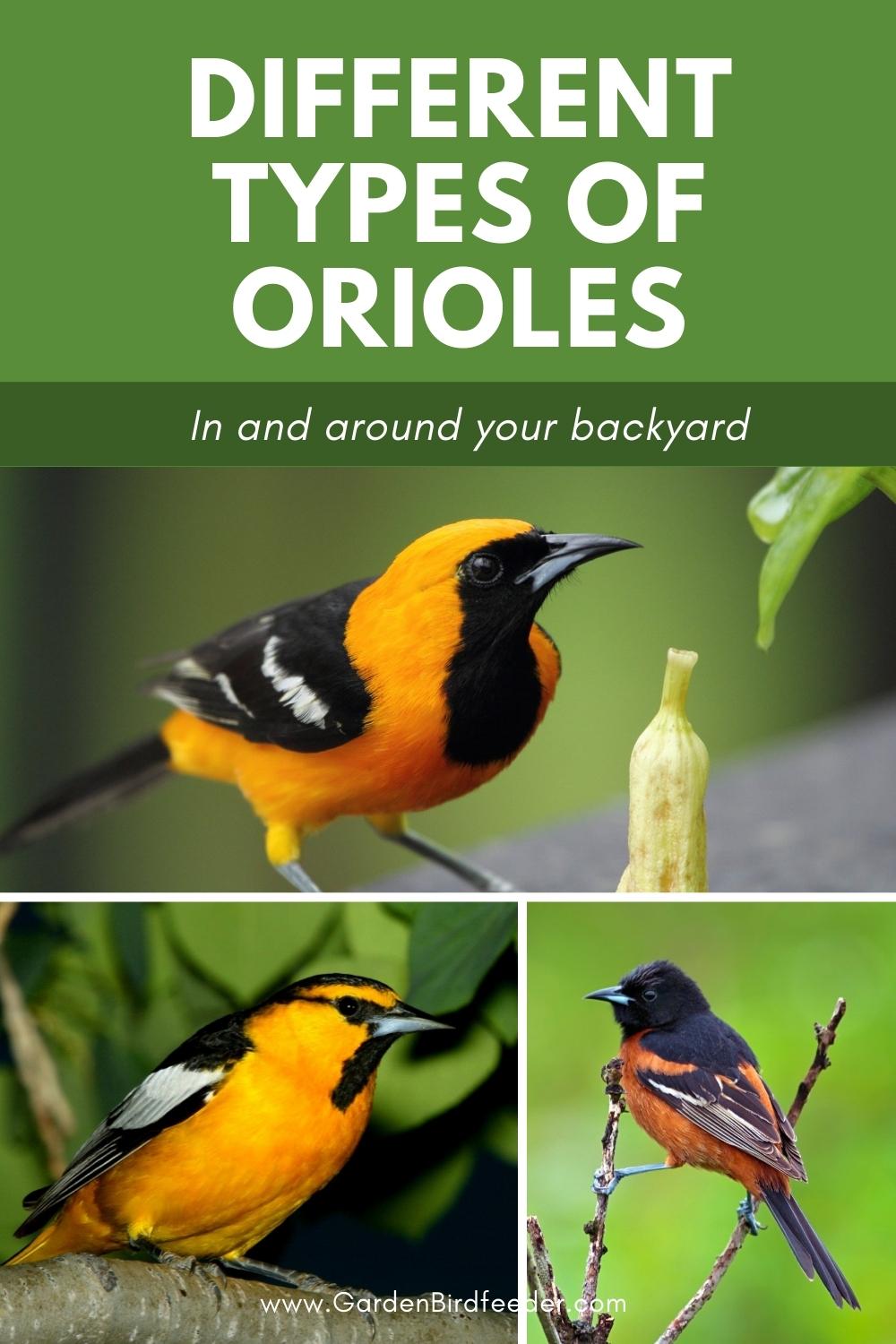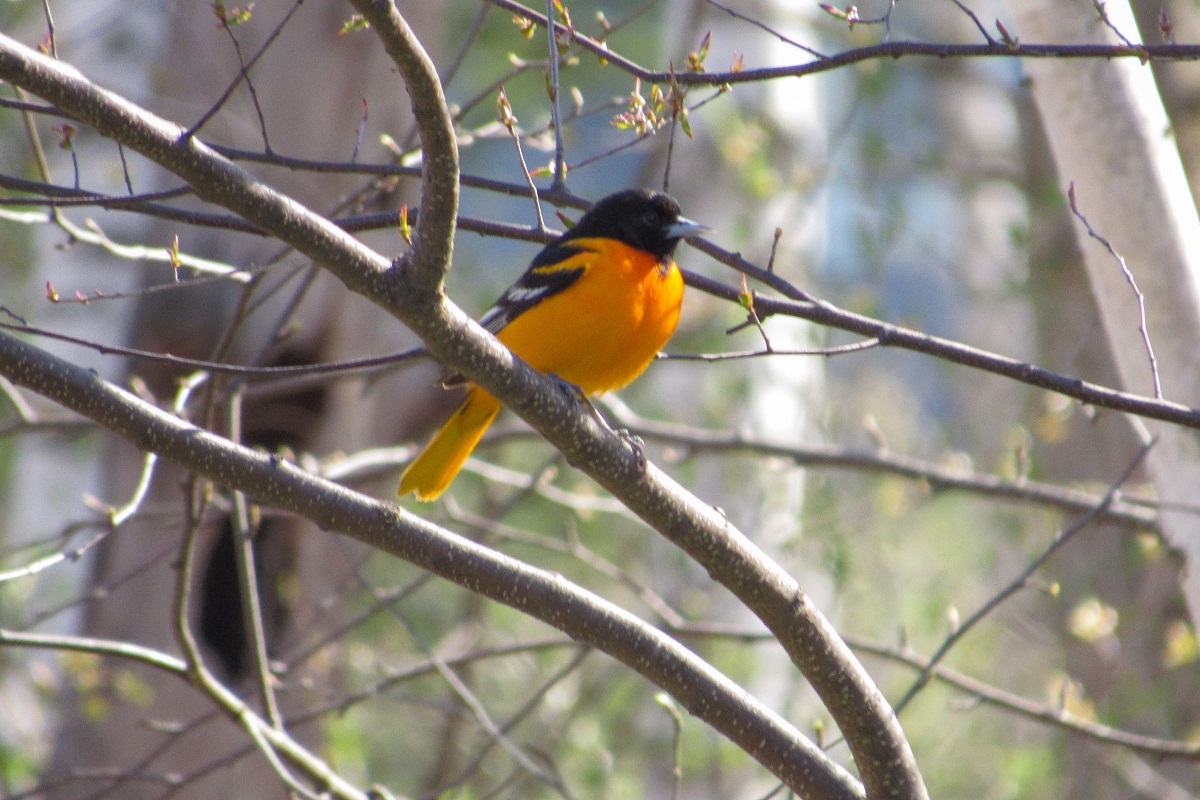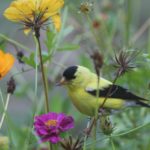Have noticed that there are different types of orioles? If you’ve spotted these black and orange beauties in your backyard, you may have noticed that they don’t all look the same as in the bird books.
Orioles are some of the most recognizable birds out there thanks to their orange, black and white plumage. But, how many species of orioles are there, and how can you tell them apart?
In this guide, we will introduce you to the coloring, geography, migration patterns, nesting habits, and behaviors of some of the most well-known oriole species. But first, let’s talk a little bit more about orioles in general.
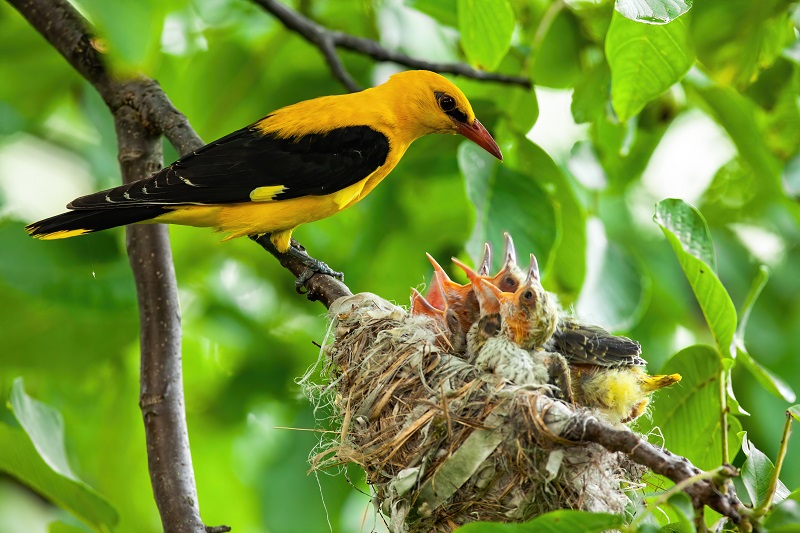
Oriole Basics
When most people talk about orioles, they are referring to New World orioles, which are members of the blackbird family. There are also birds known as Old World orioles, but those belong to an entirely different family (Oriolidae).
Sometimes, Old World orioles are called “true orioles.” Settlers in the New World thought New World orioles looked similar, thus they started calling them orioles as well.
How many types of orioles are there? There are around 30 species of New World orioles and around 30 species of Old World orioles.
1. Baltimore Oriole
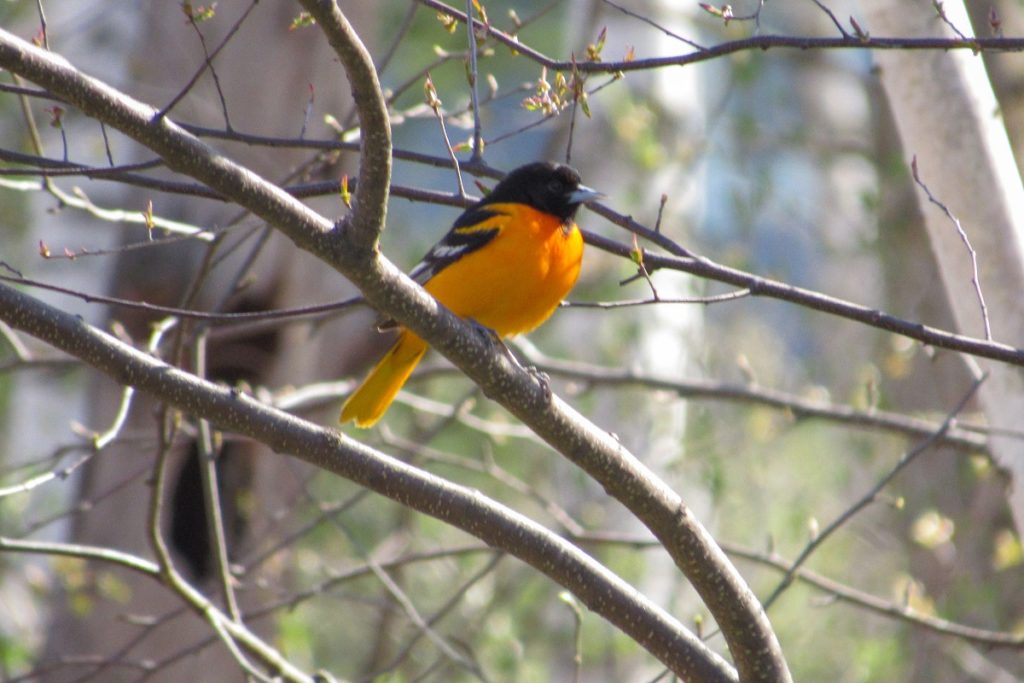
The most iconic type of oriole is undoubtedly the Baltimore Oriole (Icterus galbula).
Coloring: The male bird has a bright orange belly, a black head, and black wings with white streaks. The female bird’s head is the same muted orange as the rest of her body, and the wings are grayer.
Geography and Migration Patterns: Baltimore Orioles breed in central and eastern North America, arriving in April and May. By July, they are on their way to the Caribbean, Central America, and even the northern reaches of South America. There, they spend the winter.
Nesting Habits: This type of oriole weaves its nest and hangs it up high in the trees.
Behaviors: Baltimore Orioles like to spend time near the treetops. Their whistling calls are very distinctive.
2. Hooded Oriole
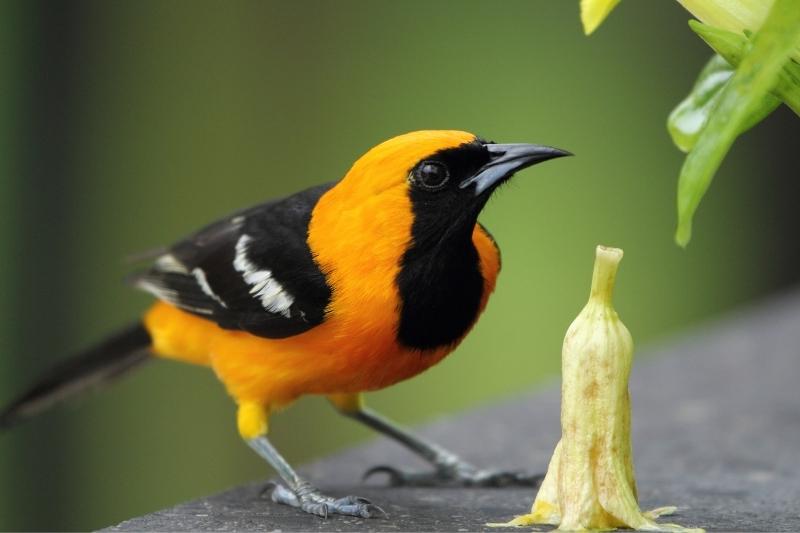
Another type of oriole that is both common and easy to identify is the Hooded Oriole.
Coloring: Whereas the Baltimore Oriole’s belly is deep orange, the Hooded Oriole’s is more of a sunny yellowish-orange. The head of the male is the same color, but the throat is black. The wings and tail are black with white streaks. The female has more subtle coloration and no throat patch. They are also called “Palm-Leaf Orioles.”
Geography and Migration Patterns: This species breeds in northern Mexico and parts of the southwestern United States. Hooded Orioles fly further south into Mexico for the winter.
Nesting Habits: The reason for the name “Palm-Leaf Oriole” has to do with the nesting habits of Hooded Orioles. If you have palm trees in your area, check underneath the fronds. You might find their nests hanging there.
Behaviors: Hooded Orioles like to hide, but you can find them by listening for their calls.
3. Bullock’s Oriole
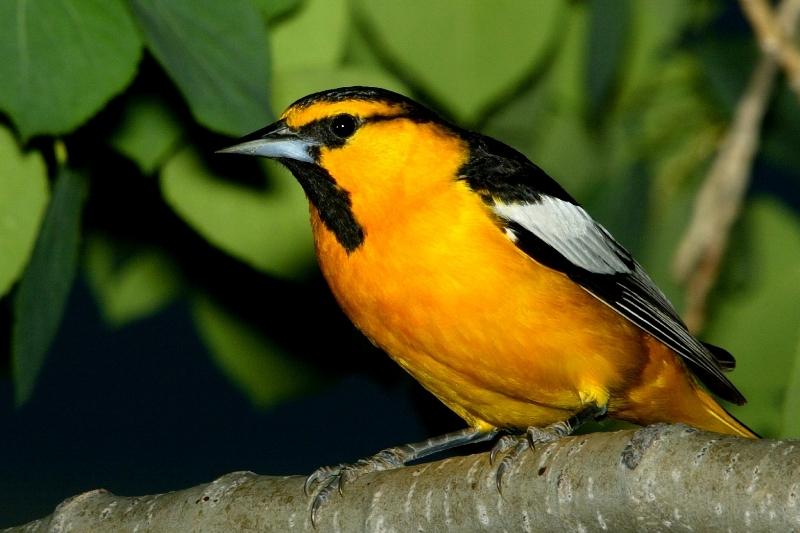
If you are in the western US, you may have encountered a Bullock’s Oriole while hiking in the woods close to a stream or river.
Coloring: The male of the species is bright orange with a black throat patch and black and white wings. A black line runs horizontally across the eye. The female is lighter orange with grayer wings.
Geography and Migration Patterns: You can find this bird throughout the western United States during breeding season. But when the weather turns cold, Bullock’s Orioles migrate down to Mexico. If you are lucky, you might spot a few in southern California during the winter months.
Nesting Habits: The tree that the Bullock’s Oriole favors for hanging nests is the cottonwood.
Behaviors: This species sometimes mates with Baltimore Orioles. For this reason, the two species together used to collectively be called the “Northern Oriole.”
Another interesting habit of the Bullock’s Oriole is hanging upside-down while nest-building or questing for food.
4. Orchard Oriole
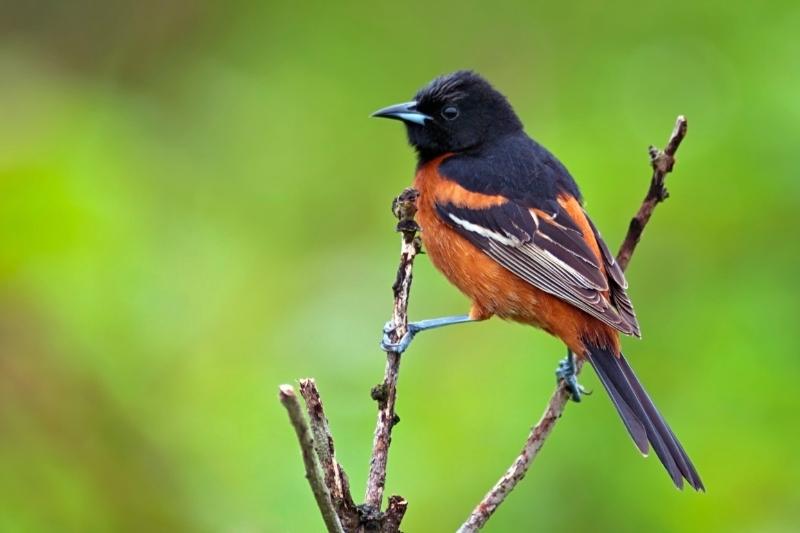
The smallest oriole that you can find in North America is the Orchard Oriole.
Coloring: The male Orchard Oriole has a dark rust-colored belly and a black tail. The wings are black, orange, and white. The female looks entirely different. She is a pale grayish-yellow color with gray and white wings. If you did not know how different they appeared, you would likely guess they were members of different species.
Geography and Migration Patterns: During breeding season, Orchard Orioles nest throughout the eastern and central United States. Most of them spend the winter in Mexico or Central America, but you can spot a few in Florida.
Nesting Habits: Orchard Orioles are very community-oriented birds. Indeed, when a tree can support more than one nest, they will often share it. But without a tree conducive to such a community, they will create individual nests in individual trees.
Behaviors: Just as Orchard Orioles are often not competitive with one another, they tend to be tolerant of other types of birds as well. So, they may be right at home in your yard alongside other species of orioles, or even other types of birds such as robins or sparrows.
5. Altamira Oriole
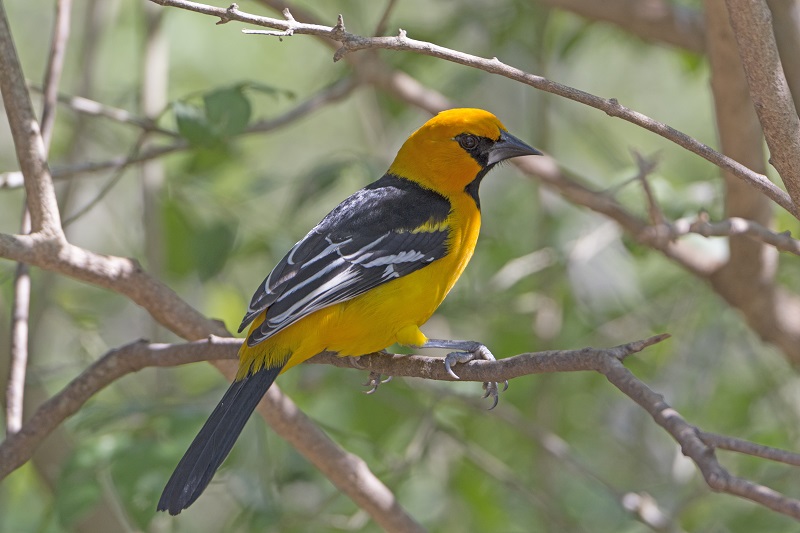
While the other types of orioles we have talked about migrate, one species that stays in the same place all year is the Altamira Oriole.
Coloring: Whereas there are stark differences in coloration between the males and females of many other Oriole species, Altamira Orioles have similar appearances. Look for a bright orange bird with a black throat, a black tail, and wings that are mostly black with some white on the feathers.
Geography and Migration Patterns: This species of oriole resides mainly in northern Central America and the Mexican Gulf Coast. But it also lives in the Rio Grande Valley in Texas, where it is a year-round resident.
Obviously, if you are outside that region, you are not likely to encounter one. But if you do live near there, you probably spot Altamira Orioles pretty frequently.
Nesting Habits: Similar to Baltimore Orioles, Altamira Orioles weave hanging nests in high trees. The nest of an Altamira Oriole can be astonishingly large, exceeding over two feet in length.
Behaviors: Sometimes, you might find an Altamira Oriole in front of your vehicle in the parking lot. If you take a closer look at what it is doing, you might notice it is looking for dead grasshoppers to eat.
Other Types of Orioles
Along with the common types of orioles above, some additional species include Scott’s Oriole, Audubon’s Oriole, the Black-Beaked Oriole, the Orange-Crowned Oriole, the Variable Oriole, the Saint Lucia Oriole, and more.
Are There Other Birds That Look Like Orioles?
Yes, there are a number of other types of birds that appear similar to orioles. Some of these include the Spotted Towhee, the American Robin, the Blackburnian Warbler, the Varied Thrush, and the American Redstart.
Summary
Now you are familiar with some of the different types of orioles. And based on the descriptions we have shared of some well-known species, you know a bit about how to identify orioles as well.
Want to attract more orioles to your yard? Check out our article on the best oriole bird feeders, or learn how to make a DIY Oriole Jelly Feeder.
Like It? Pin It!
